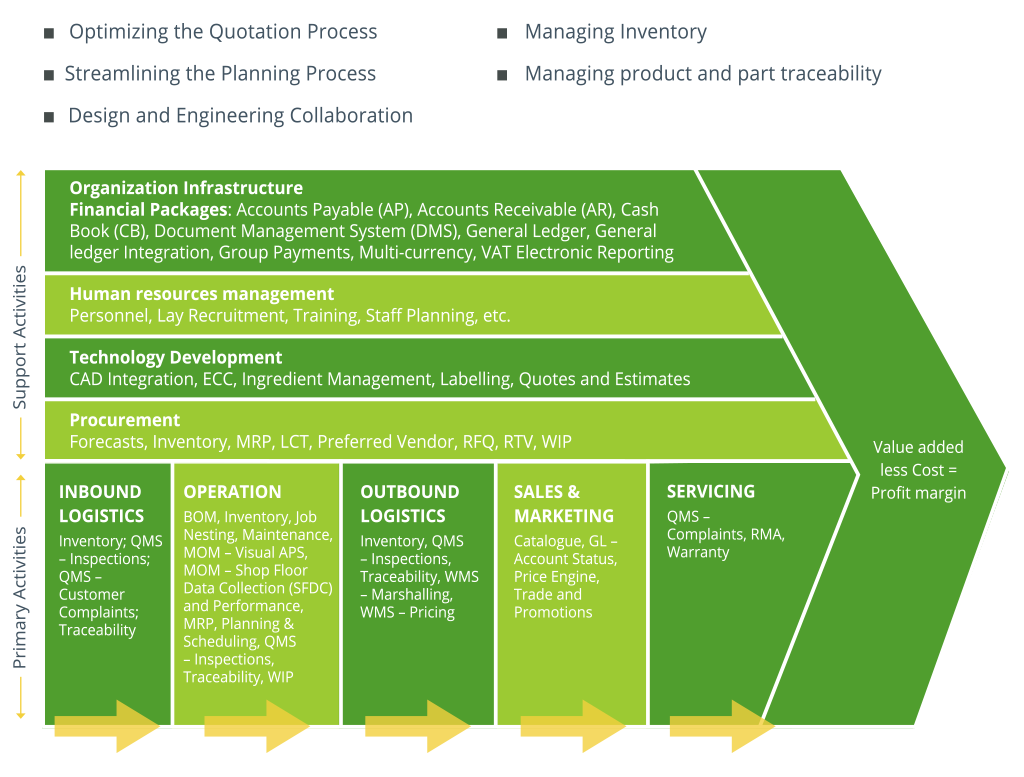Years ago I read a quote that I really like by Gallileo Galilei, the 16th century Italian astronomer and physicist who some people refer to as ‘the father of science’. The quote ‘Misura ciò che è misurabile, e rendi misurabile ciò che non lo è’ translates as: ‘measure that which is measurable, and make measurable that which is not.’
In my opinion, this is a perfect sentiment to bring to metal fabrication manufacturing (or the broader job shop manufacturing environment) – shop floor and front office. We are entering an age when data is becoming ubiquitous, and, thanks to IIoT (Industrial Internet of Things) technologies, it is now possible to monitor and measure almost anything. In the past, we could only measure certain key aspects of performance, but today, even saying that ‘the sky’s the limit’ is an understatement. We have become so adept at monitoring and measuring that I’m no longer certain where the limit really lies.
Australia’s steel fabrication industry is highly diverse, with many businesses producing a wide variety of steel fabricated products that are used in a range of economically significant downstream industries.
With its origins post-World War II, today Australia’s metal fabrication shops are changing, and changing rapidly. Because demand is driven by the economy, the profitability of the metal fabrication industry relies on economic growth to thrive. Since the economic rebound after the last recession, metal fabrication has become a strong and intense business that continues to recalibrate itself and flourish. Current adjustments include a shift from leaning on a few large projects to maintain a yearly profit to attempting to maintain steady sales volumes by diversifying.
Most of the top metal shops are now under the constant surveillance of ERP software, or some other form of advanced manufacturing solution. That gives executives easy access to metrics such as line speed, assembly speed, error rates, as well as granular data on factory utilization patterns. Armed with a fairly simple set of KPIs, profit can be increased by determining the exact conditions under which output is maximized. All-in-all, KPIs are a demonstrably efficient and effective way for managers and executives to help their companies gain productivity, monitor machine and employee performance, improve quality and generally keep their departments and companies moving in the right direction.
KPI Data in your ERP
That, however, is not the end of the story. ERP offers the C-Suite unprecedented amounts of real-time performance data – but who’s got the time to go through it all, let alone determine what’s important, and what’s not? That’s where Data Analytics software comes in. Let’s start with a quick definition of Analytics, so we’re all on the same page. This one is from Wikipedia:
‘Analytics is the discovery, interpretation, and communication of meaningful patterns in data. Especially valuable in areas rich with recorded information, analytics relies on the simultaneous application of statistics, computer programming and operations research to quantify performance.’
That sounds promising – and it is. ERP software with analytics functionality provides executives with Business Intelligence and Actionable Insights based on relevant KPIs. Rather than old-style decision making, based on historical performance data, Analytics provides you with real-time insight into present and future conditions, which can help drive profitability, and keep you from missing important opportunities.
Industry-built ERP
There are a couple of caveats. First, it’s important to make sure that your software is ‘industry built’. If the programmers who designed your ERP have little to no experience with the metal fabrication industry, why on earth would you trust their software? Secondly, data analytics works best when the data is reliable, which means it ought to have access to a ‘single source of truth’ (SST). A cutting-edge ERP should have the ability to keep all of your business’s information in one unified package – no errors, no duplications. With an SSOT, your data is pure and incredibly valuable.
When these difficulties have been surmounted, your company’s KPI’s, interpreted by data analytics, will give you multi-dimensional insight into financial data, operational data, performance, trends and opportunities. And all that, of course, will help immensely with the formation and execution of short- and long-range business strategies, as well as giving your company a distinct competitive edge over your less data-driven competitors. And that, in my opinion, is what an investment in a modern business solution is all about.
Using the Porter’s Value Chain as a checklist against your ERP, you should be able to quickly and easily see how your ERP can provide value across your entire metal fabrication value chain:

The industry is learning to balance capacity with variability and new ways to build support for the inherent variability of customer demands that are driven by an ever-changing economy.
The volatility of the market has required the industry to streamline production practices and focus on the ability to reliably produce high-capacity output for many varied customer requests. Those metal fabricating shops that can optimize their manufacturing process and operating machinery, paired with stakeholders who can pay close attention to competing costs and the economic trends affecting their customer base, will lead the industry.
To bring this full circle, I once again turn to Gallileo Galilei. ‘All truths‘ he tells us, ‘are easy to understand once they are discovered; the point is to discover them.‘ With the right ERP, the appropriate KPIs, and a robust analytics program, your company truths will be discovered, and a universe of profitable manufacturing will unfold before your eyes.




2 thoughts on “ERP Supports Profitable Manufacturing for Metal Fabrication”
Great article guys – from https://coreng.co.uk/
This article provides valuable insights into how ERP systems can enhance efficiency and profitability in metal fabrication. I found the discussion on streamlining operations particularly relevant, especially for businesses looking to reduce waste and improve inventory management. Given the complexities involved in various manufacturing processes, I’m curious about the integration of ERP systems with specialized materials like stucco. How do you see ERP solutions supporting manufacturers who work with stucco in terms of tracking raw materials and ensuring quality control throughout the production process? Any insights would be greatly appreciated!